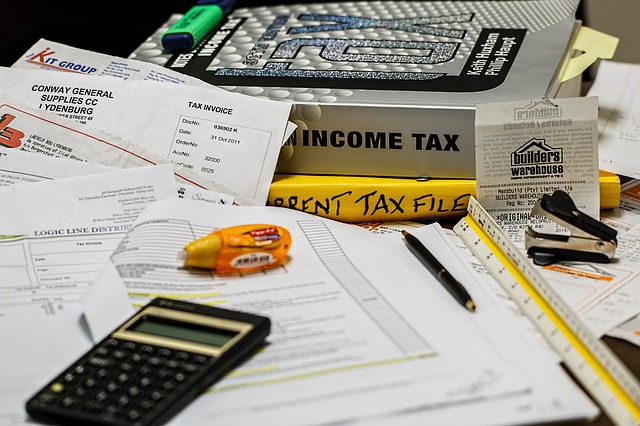Whether you’re an Australian citizen or a foreigner residing in Australia, you have to pay taxes if you’re eligible. Although taxes are a complicated process, they’re important in the long run. Also, not paying taxes in time can cause a fair bit of legal trouble for you as well. So, knowing how tax returns work is important.
One of the most essential parts of paying taxes in Australia is to file a tax return once you’re done paying taxes. It’s a complicated process because there’s a lot of paperwork involved. However, paying tax returns properly can be beneficial for you in a lot of ways. You might often wonder how tax returns work and why it is important to file tax returns.
In this article, we’re going to discuss everything you need to know about tax returns in Australia to give you an idea. Let’s begin!
What is a Tax Return?
A tax return is a document you submit to the Australian Taxation Office at the end of every fiscal year. The document contains all the relevant information about your taxes. These include how much money you made in the year, your assets, your superannuation funds, the amount you paid in taxes, etc. Furthermore, you also need to provide information about your additional income and any tax deductions you’re eligible for. However, you’ll only have to lodge a tax return if you’re eligible for it.
How do Tax Returns Work?
Your tax returns help the authority determine the technicalities of your taxes. Once you file a tax return, the authority goes through your documents. It determines whether you’ve paid the accurate amount of taxes based on the paperwork you provide.
Once the details are calculated, the tax officials will let you know whether you need to pay any additional taxes based on your income and assets. Furthermore, the deductions you’ve claimed in your form will also be evaluated, and you’d receive the amount of money you’re eligible for.
Eligibility for Filing Tax Returns:
Not everyone is supposed to file tax returns. There are specific criteria that you need to fulfil to be eligible for tax returns. These include:
For Australian Residents:
For Australian residents, you have to lodge tax return documents if you have any tax deductions to avail from your payable tax. Furthermore, if your income exceeds the tax-free threshold or you have income from assets, investments other than your current job. Also, if any of your payments were already tax-deducted, especially for independent contractors or people who work on a temporary basis.
Furthermore, suppose you’re planning to leave Australia for at least one fiscal year. In that case, you’d have to lodge tax returns and adequate paperwork of your departure.
For Non-Australian Residents
So, you might wonder how do tax returns work for non-residents in Australia? Actually, it’s not complicated at all. For non-residents, they have to lodge tax documents for any amount of money they make. However, they have to be working in a proper job in Australia to be eligible for it.
However, if your only income from Australia was investments for non-residential projects or you’re a working holidaymaker (417 or 462 visas) you won’t have to lodge any tax return documents. But if your payments exceed the 37001AUD benchmark, you will have to lodge a tax return with all the documents.
Once you fulfil the requirements to be considered an Australian resident, you might be eligible to apply for tax deductions based on the tax you paid on your time as a non-resident. However, these involve some technicalities and might not be available for everyone.
When to File Tax Returns?
Now that we know how tax returns work, we have to lodge our tax return paperwork at the right time. In Australia, the fiscal year ends on 30th June. You’re eligible to file tax returns after 1st July up to 31st October
However, you have to ensure that you’ve paid your taxes and have all the documents prepared by then. Not filing tax returns after being eligible for it can cause legal troubles in the long run.
How to Lodge Tax Returns?
Filing tax returns can seem a bit complicated at times due to its nature. Firstly, you have to make sure you have all the documents prepared and ready before the end of the fiscal year (30th June).
Firstly, you can use the tax return tool to determine whether you’re eligible for tax returns or not. Make sure to put accurate and correct information for correct results. Afterwards, if you’re eligible, you have to submit your documents.
The simplest way to lodge tax returns is by using the myTax section of the myGov app. You have to register at myGov and access the myTax section. Afterwards, you can submit the necessary documents, attach the required paperwork and fill the form for a seamless submission.
Otherwise, you can also collect a tax return form and fill it up manually. Once you’ve filled it up, you can send it to the necessary authority for evaluation. Although this is a bit more tedious, you can use it if you don’t have access to soft copies of certain documents.
For a more secure option, however, you can reach out to a tax accountant for help. They’ll manage all your necessary taxation papers at once. From making tax-related documents to making essential applications, a tax accountant will do everything for you.
However, you have to ensure that you’re investing in the right accountant. Your accountant needs to have the necessary certificates and accreditations to be eligible to deal with your paperwork.
Conclusion:
Paying taxes is a complicated process. The documents and paperwork can make it seem overwhelming for you. Also, since tax returns are something you submit after taxes are over, most people overlook it. Thus, missing out on its benefits.
In this article, we’ve discussed how do tax returns work in Australia to give you an understanding of it. We hope you found this article useful!


